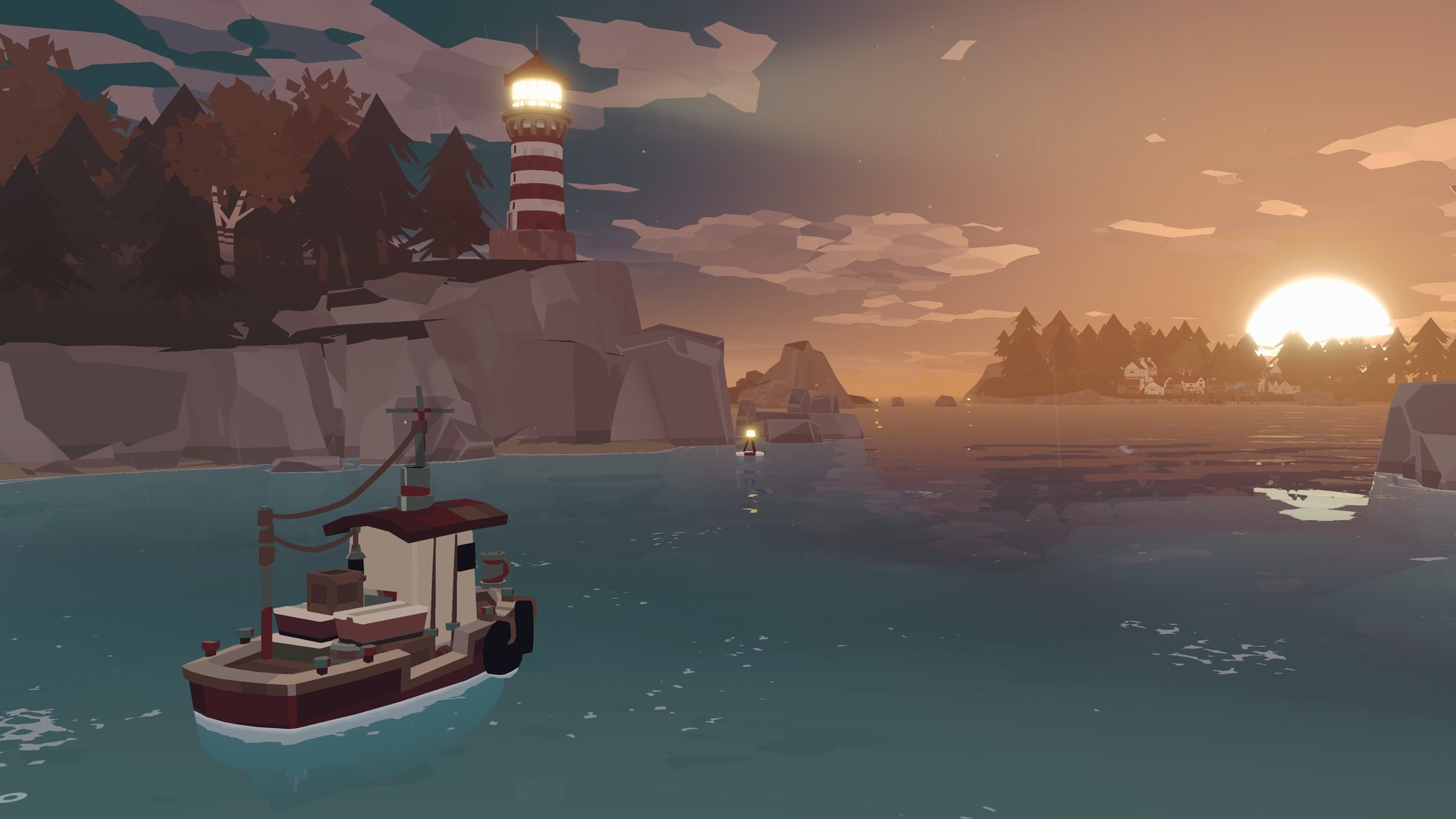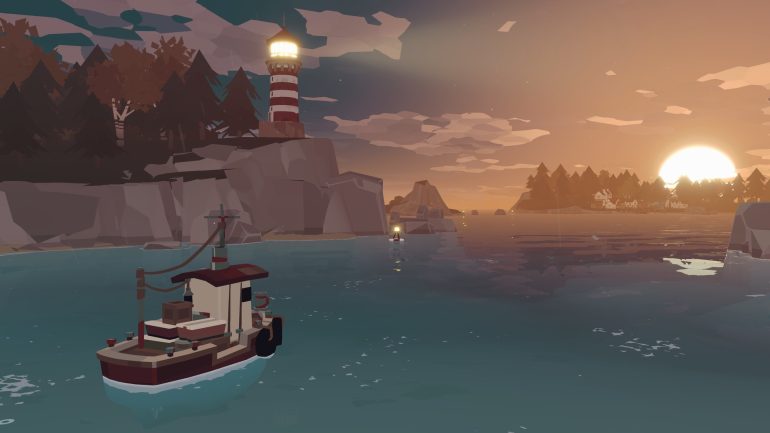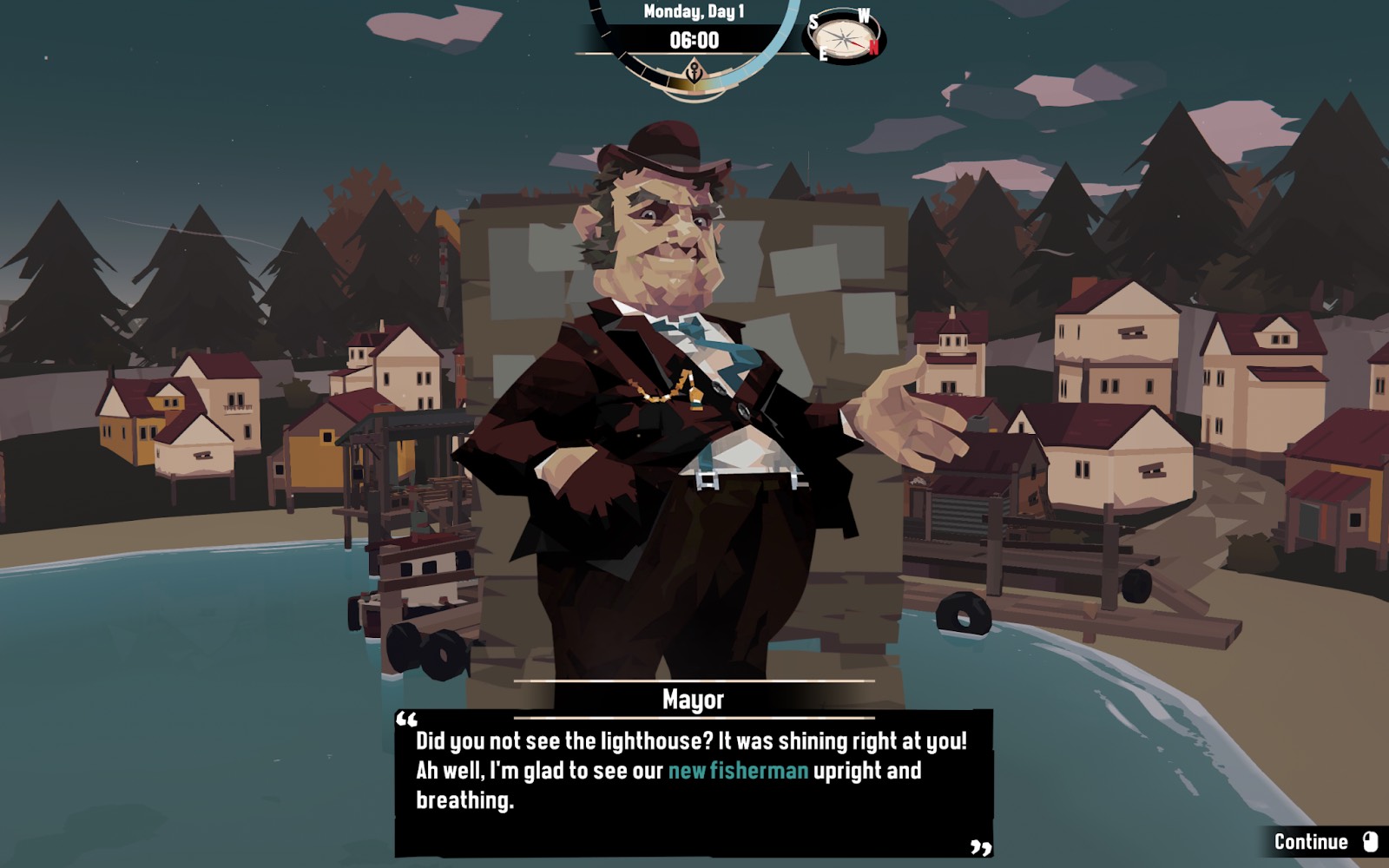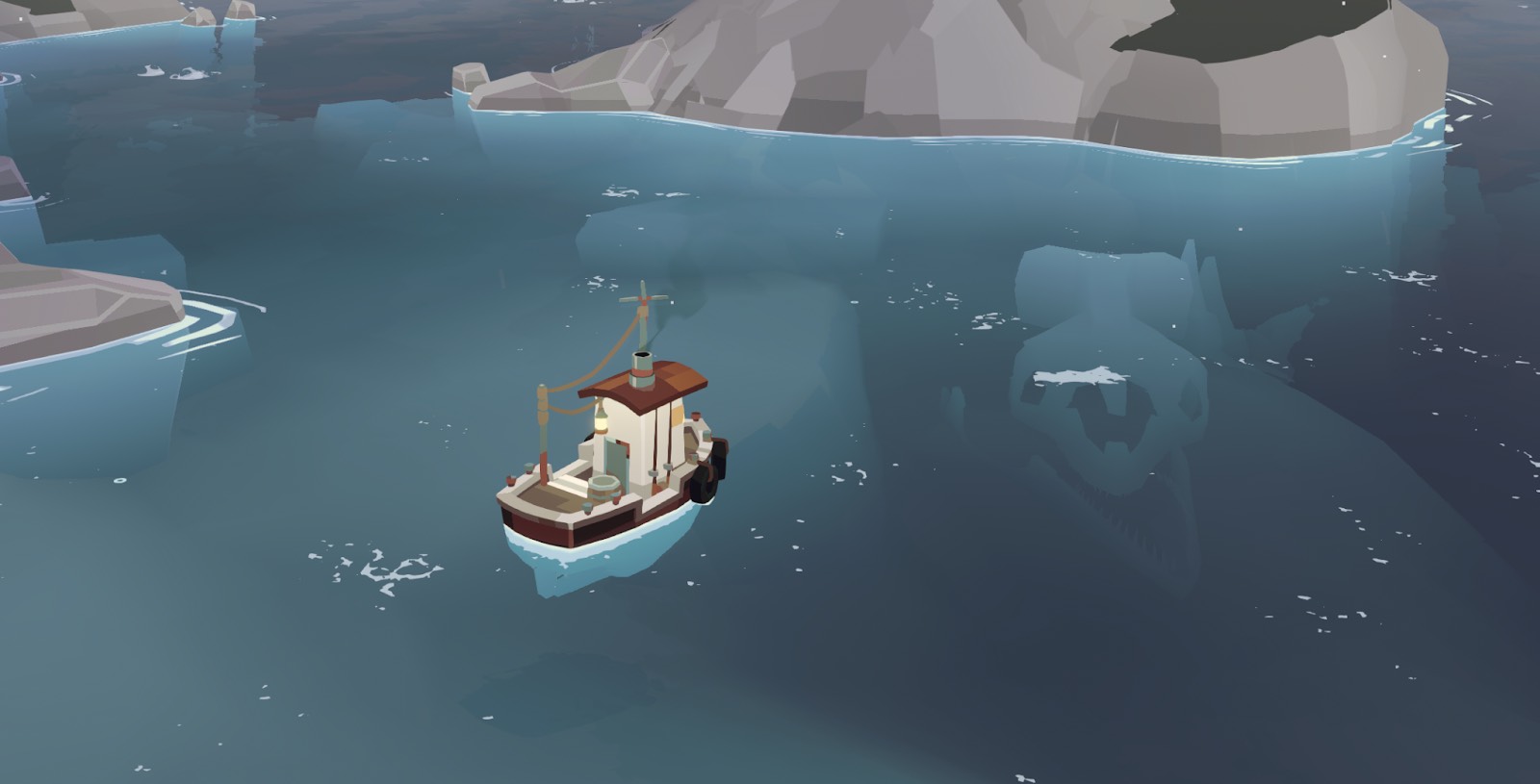Dredge, Developer Black Salt Games’ survival horror and indie adventure game, has plenty of substance hidden underneath its surface, and the game wants you to see it. Between well designed and evolving mechanics, a beautiful atmosphere and sense of cohesion, and rewarding and varied progression paths, Dredge is easy to sink into.
You’re into the world immediately– a stylized 2D cinematic plays to introduce the simple premise: you’re a down-on-your-luck fisherman headed to take on the role of Greater Marrow’s new angler when you crash right by the lighthouse. From there, you wake up on the dock and are introduced to the Mayor, who gives you a new boat and some debt on the side.
You undock and are free to explore around you, with appropriately-sized text boxes popping up to explain the simple cores of the layered mechanics. Fishing is a series of clicks or presses when the time is right, represented by multiple graphic patterns with varying difficulties. You meet the Fishmonger, who buys your fish, and the Shipwright, who upgrades and repairs your ship.
From the start, Dredge dares you to explore by spreading islands and landmarks at the edge of your view. Sail to Little Marrow, where the Trader who buys the antique trinkets you collect is, or to Blackstone Isle, where the Collector offers to buy any mysterious relics from you. At the start of the game, these locations take most of the time out of your day to get to. Time is a central resource in this game, and you’ll want to get home before the night.
From your first conversations with the Mayor, it’s obvious that something unnatural is under the surface. The Mayor tells you to get back before sundown, or the Fishmonger talks about how he could never do the job you’re doing. Even the descriptions for items reflect the Lovecraftian tone; the description for the toggle lights ability says “Lights help you see, but make you more visible too.” The panic that builds up while you’re out in the dark is a mechanic that will summon rocks into your path out of thin air, or a giant anglerfish to haunt you, complete with a disturbing audio cue. The threat of night is encouraging, and it makes you balance between wanting to explore the deliberately crafted map, and being close enough to a dock or light source by the time night falls.
Other mechanics are equally as engaging to interact with–part of Dredge’s identity is that it’s a series of evolving minigames wrapped up in an exciting overcoat. The inventory is a well-recognized survival horror grid system, like Prey or Resident Evil. You can dredge for treasure, trash, and materials for upgrades, which has a minigame where you toggle between two tracks with obstacles on them for a short amount of time. Permanent passive buffs can be gained by selecting books you acquire from characters and letting a certain amount of in-game time pass. Cleverly, time doesn’t move when you’re not doing something, so getting distracted by a phone notification won’t leave you stranded at night.
Along with books acting as a passive sense of progress, plenty of other parts of Dredge consistently reward you for spending time with them. Fishing expands into trawling and crab cages for automatic fish collection; research parts can be found in the world or gained through side objectives to spend in a technology tree; and you can sell various different items to different vendors depending on the type of item. There are also mainline story objectives that ask you to find specific items and push you toward different corners of the map.
The combination of things to complete and the pace you discover new locations, fish, items, and
characters contributes to a constant stream of payoff. As you upgrade your ship you feel the
difference. You notice every time your ship gets faster and can go further after an engine
upgrade; every time you get more space in your inventory grid; every time you get a bigger set
of lights and can stay in the dark longer. The four main sections of the map are also wonderfully
unique and have different story goals and information in them.
The central story in Dredge pulls you in more and more as you play–you’ll get somewhere around 15 hours out of the game, without going for a completionist run. There’s always tension, but you never feel rushed in a bad way. Most of the time, I was motivated by my own eagerness to see the map and be able to sail further. The stylized aesthetic is simple and understood by the team that developed it, and the sound design and orchestral music is enough to make a fisherman cry during the in-game sunrises.
Dredge is more than the sum of its parts, each part is great individually, too. It’s garnered a lot of attention since it was announced, and the game lives up to expectations, surpassing them even. It’s surprisingly deep and keeps me excited for the future of smaller-scale games, reminding me of the upcoming car-based survival game Pacific Drive. Here, publisher Team17 strikes again, releasing another game that is undoubtedly worth all the time you put into it.
Dredge is available now for PlayStation, Xbox, PC, and Switch.





